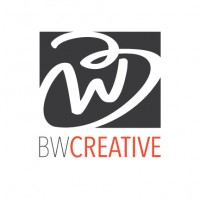I am no scientist. I am an artist. I like the way things look and beyond simple curiosity, I’m not too interested in knowing why things look the way they do. A web designer is a little different. By default, a web designer must predict why things look the way they do before they make things at all. I’m afraid my curiosity got the best of me, though, and I took on the task of creating this e-newsletter for a political group in Mississippi.
I love to organize information. For this reason, web design has always been fascinating to me. Bully Bloc provided me with a logo, a few pictures, and a lot of text. Normally, I’d go to town in Illustrator or InDesign, but since HTML is somewhat new to me, I had to hold my horses. I utilized a generic email template I found. It was a single column and a simple starting point for me. From there, I created the header, the banner, and the section headings in Photoshop. It is remarkable how much of a conscious effort I had to make when working for web as opposed to print. First of all, I am used to working in CMYK color mode. I’ve learned how to think in terms of four colors of ink and how they relate to each other. In the print world, there isn’t just a single black but there is also a rich black. The simplest of colors must be formulated by mixing Cyan, Magenta, Yellow, and Black. In RGB, there are only three colors to worry about (Red, Green, and Blue). It is color manipulated by light, not ink. Now my color sliders need to be all the way to the right for lighter colors. You get the idea. On top of all of this, web-safe colors are even more limited than CMYK values. Then you have the issue of Raster versus Vector. I’m so used to working with those nice crisp vector lines. I’ve really come to fear pixels as a result. In Photoshop, you have to think in pixels. There are no more inches and half inches, just absolute pixels. In print, everything has to be at 300 dpi; in web, everything is 72 dpi. That’s the difference between playing an XBox and the Atari 2600 (in terms of resolution).
Once that was done, I had to think in HTML and CSS. This is like trying to thread a needle with mittens on. I’m used to grabbing an object and dragging it to it’s perfect location. In HTML, there is a scientific way to tell a browser where that perfect place is. It would be like trying to define exactly why you find a particular person attractive. When your not used to defining things so precisely, it can be a pretty arduous task. Anyway, I choked my way through it and here is the final result. Not bad for a print designer, ehh?
Sending an email campaign is another story but thanks to some help from a friend, I was able to handle that side relatively easily. The newsletter went out last week and I’m already looking forward to doing next month’s. This whole process was a bit addicting. I’m thinking of all of my clients who could benefit from it. I predict I’ll be doing a lot more.
